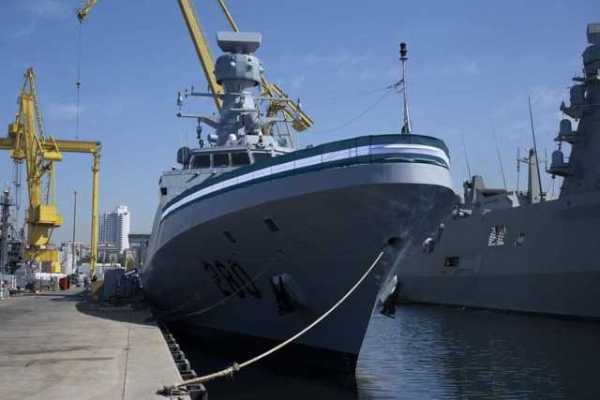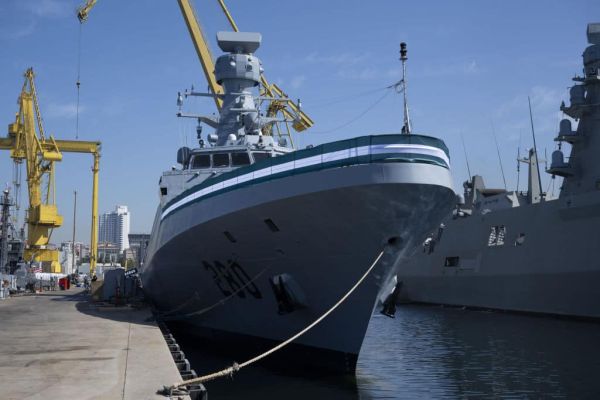

New Delhi: Despite facing a severe economic crisis, Pakistan is ramping up its naval modernisation efforts, aiming to build a powerful 50-ship fleet. This ambitious move has sparked questions about the country's strategic priorities.
At present, Pakistan is grappling with soaring inflation exceeding 24 per cent, a stagnant GDP, and unprecedented public dissatisfaction. The drive to expand its naval capabilities seems less like a demonstration of national strength and more like a high-risk gamble in response to shifting geopolitical pressures.
The Strategic Pivot: India and the Indian OceanAt the core of Pakistan’s naval expansion is its long-standing rivalry with India. The Indian Navy, with its advanced defence capabilities and expanding global presence, dominates the Indian Ocean Region (IOR). In response, Pakistan has strengthened its alliances with China and Turkey to counterbalance India’s growing naval power. The Pakistan Navy has recently acquired a range of maritime assets, including the advanced Hangor-class submarines, MILGEM-class corvettes, and the domestically developed Jinnah-class frigates.
The increasing militarisation of Gwadar Port, which is a cornerstone of the China-Pakistan Economic Corridor (CPEC), signals Pakistan’s intent to position itself as a critical player in regional geopolitics, albeit as a junior partner to Beijing.
China’s Role: Ally or Overlord?China has a strategic interest in the Indian Ocean Region, which is why it is deeply involved in Pakistan’s military modernisation efforts. For Beijing, Gwadar Port is a crucial access point to the Arabian Sea, offering a direct route that bypasses the vulnerable Malacca Strait. As both a benefactor and enabler, China supports Islamabad by financing key projects and sharing its technological expertise.
Despite the strong alliance, there is evident distrust between the two nations. Pakistan has been insisting on acquiring second-strike nuclear capabilities concerning the future use of Gwadar, a strategically important port city. This demand has led to a deadlock between the two countries.
Intelligence reports have revealed that Pakistan gave private assurances to China about transforming Gwadar into a permanent military base. But the public protests and backlash have derailed negotiations. It can be said that Pakistan has now become a client state in China’s geopolitical calculus.
Economic Realities: Prioritising Guns Over BreadSince its formation, Pakistan has sought 25 bailouts from the International Monetary Fund (IMF), with the latest USD 7 billion agreement imposing harsh austerity measures that have disproportionately impacted the middle and lower classes. Meanwhile, the military’s vast economic empire, valued at over USD 20 billion, remains untouched.
The military’s deep entanglement in Pakistan’s economy, through entities such as the Fauji Foundation and Army Welfare Trust, further distorts resource distribution.
Critics argue that the defense establishment’s immunity from financial scrutiny has exacerbated economic inequality, forcing ordinary citizens to bear the brunt of the country’s fiscal mismanagement.
Domestic Backlash: Gwadar as a Symbol of DiscontentBalochistan, home to Gwadar Port, remains emblematic of Pakistan’s uneven development. Despite its strategic importance, the region suffers from chronic underdevelopment, unemployment, and resource exploitation. The promises of prosperity tied to CPEC have failed to materialise, fueling unrest and calls for greater autonomy.
As a result, Gwadar has become a flashpoint—not just for local grievances, but also for Pakistan’s delicate relationship with China.
India’s Perspective: Strategic VigilanceFor New Delhi, Pakistan’s naval build-up is a double-edged sword. On one hand, it underscores Islamabad’s prioritisation of military strength over economic stability, potentially undermining its long-term strategic coherence. Conversely, the deepening China-Pakistan nexus at Gwadar poses a tangible threat to India’s maritime interests in the IOR.
India has responded by modernising its own naval capabilities, focusing on aircraft carriers, nuclear submarines, and maritime surveillance. Platforms like the Quad further bolster India’s strategic position, ensuring a multilateral approach to counter China’s and Pakistan’s growing footprint in the region.
A Nation AdriftPakistan’s naval aspirations may offer a veneer of strategic ambition, but they do little to address its underlying vulnerabilities. Without meaningful economic reforms and a recalibration of priorities, its maritime ambitions risk becoming an expensive mirage.
Pakistan risks drifting if it fails to strike a delicate balance between military modernization and economic stability. The country may find itself trapped by domestic unrest, external dependencies, and the evolving complexities of regional geopolitics.
While the Indian Ocean Region may be a battleground for influence, it increasingly serves as a mirror reflecting Pakistan’s internal contradictions and external dependencies.
For Pakistan, the pressing need is to realign its priorities; otherwise, its naval ambitions will remain little more than strategic posturing rather than a genuine path to regional power.